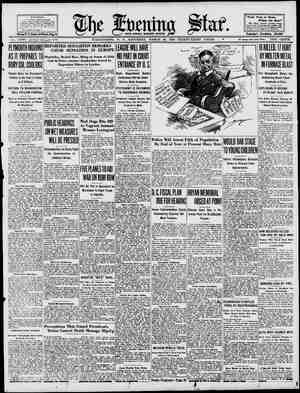The Daily Worker Newspaper, March 20, 1926, Page 7
You have reached the hourly page view limit. Unlock higher limit to our entire archive!
Subscribers enjoy higher page view limit, downloads, and exclusive features.
Buyin tot THE DAILY WORKER. Second Section: This Magazine Section Appears Every Saturday In The DAILY WORKER, SATURDAY, MARCH 20, 1926 Maurice Becker, Celebrated Cartoonist of The DAILY WORKER, Pictures the Picket Line of Passaic as Standing Solid Against the Clubs and Tear Gas Bombs of the Bosses’ Polite. Passaic Breaks a New Trail y — eee: Ti eS i HARDWORKING, emaciated people, earning $12 to $18 a week on the average, working 48 to 54 hours per week, mostly women and children—youngsters of foreign-born workers, work- ing for modern feudal barons, under the most miserable condi- tions—health wrecking and unsanitary—if such misery and bru- tal exploitation—if such modern hell on earth in the United States can be put into a few words—this is it. Plenty of pep, full of fight, husky youngsters, peasant wom- en, not yet deteriorated under misery and exploitation, raw en- ergy and courage demanding outlet, restrained from spending itself foolishly, by organized intelligence and direction. Powerful, industrial barons, organized nationally and inter- nationally, powerfully entrenched in government, coming in con- flict with the petty bourgeoisie of the textile mill towns, who are in favor of the workers getting more wages in order to do more business. . Hesitating city governments, influenced by the petty bour- geoisie, trying to unload the trouble on the state government (militia), bidding for a big price (graft), from the mill owners as a price for sacrificing their cowardly political careers. Of a million workers in the industry only 50,000 are organ- ized with about half in unions outside of the A. F. of L. The United Textile Workers, the A. F. of L. textile union, is dominat- ed by a treacherous burocracy, pitting the skilled against the un- skilled. Many strikes here and there, mere flashes in the pan, show desperate rebellions of driven slaves. The same story repeats itself again and again. The O, B. 2 A RGIS UOT a NC RRR Dn EN RE RR ERT URR rR U., the I. W. W. or just a group of fakers lead the rebellion, and then it peters out until the next outbreak. First hesitating city governments, then pressure by the big »yourgeoisie, then provocation of the strikers thru brutalities, then state militia and federal government—this is the history of most of the strikes. Big mills—500 to 6,000 workers per mill, pro- ducing cotton, silk, woolens, and allied lines, mostly employing unskilled—real modern capitalist industry, in the process of trustification, not yet fully trustified. J Lessons of the Struggle. 'HESE many fruitless struggles did not pass by without the workers gaining their lessons and experiences, as a result of which we have a semi-radical militant mass, which falls in line and keeps discipline almost like an organized army, marches from mill to mill, forming a mass picket line—tramp, tramp, tramp, like regiments, marshalled by sergeants and captains— one word would be enough to lead them into most any duty. Americanized foreign-born and their American-born young- sters, immigrants, almost all understanding English—no more language barriers—become all one mass. The old game of the boss of pitting nationality against nationality has very little chance in this crowd. Many of Polish, Hungarian, and Italian origin, Catholic, but the influence of the priests upon them as far as interfering in the struggle, counts for very little; they all have had their lessons from former struggles. Many soldiers (Continued on neat page—page 2)




